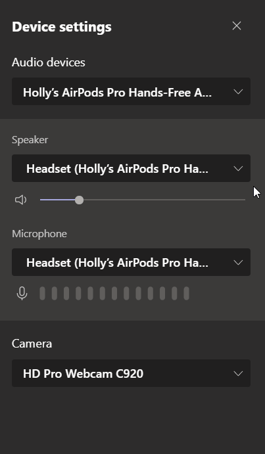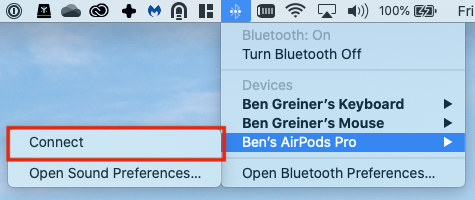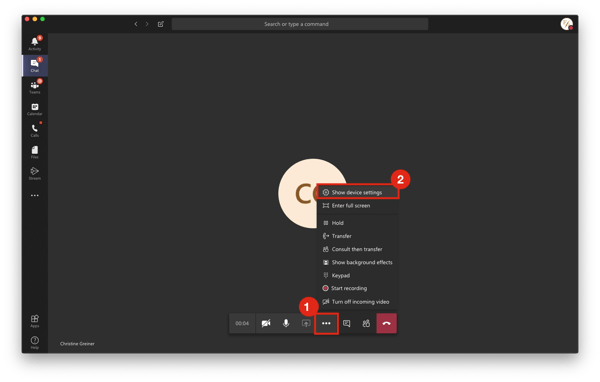Microsoft Teams has become the go-to software for chat, conferencing and team collaboration. But audio issues that pop up during a meeting — you can't hear your team members, or they can't hear you — are very frustrating.
If you're experiencing audio issues in Microsoft Teams, try one of these 3 basic troubleshooting steps to quickly fix your problem.
1. Make Sure You are Not On Mute!
Let's start with the obvious - make sure you are not on mute! Take a look at the microphone button in the toolbar and make sure there is not a line through it. Click it to mute and unmute.

Also, check out your device's mute buttons - such as your computer, your headset or your wireless earbuds.
Your laptop may have a dedicated button for the speakers and microphone, on the keyboard or elsewhere, that might inadvertently be selected.
If you're using a headset that has its own mute/unmute buttons, double-check that it's not muted.
2. Select the Audio Devices that You Want To Use
When you're in a call and you're having audio issues, make sure you have selected the right audio devices that you intend on using.
You can do this by selecting the More Actions button (three little dots) from the toolbar.

A pop up menu will appear - select Show Device Settings. This will open up a sidebar that will show you options for selecting your preferred devices, using drop down menus.

The speaker and microphone setup that you're currently using will be listed under the Audio Devices heading. If they are not what you want to use, select the little down-arrow (or caret) to see other options.
Typically your PC microphone and speakers will be selected under "Audio Devices" by default, but choose Custom Setup if you want to choose an alternate speaker or microphone (such as your Apple AirPods) for your speaker and/or microphone.

3. Troubleshooting Microsoft Team Audio Issues on a Mac
If you're using a Mac, you will want to check out these troubleshooting techniques below!
Microphone Not Working?
If you're having trouble getting your microphone to work, you might need to change one of your privacy settings.
Here's how to check:
-
Open System Preferences
-
Select Security & Privacy
-
Under Privacy, choose Microphone on the left
-
Make sure Microsoft Teams is selected
Check Your Headphone Connection
First, ensure your headphones are connected to your Apple devices (especially if they are bluetooth wireless).
This is a common problem for Apple AirPods, especially.
Before you enter the meeting - select your speakers icon on your Mac toolbar to make sure the proper device is selected!

Check Microsoft Teams Device Settings
As mentioned above, you will want to check your device settings. Note that they can only be accessed while IN the meeting, something that might be puzzling to Mac users.

Once you're in the device settings, make sure the correct audio device is selected.
Teams can sometimes select the default sound card (built-in speakers) on your Mac even after you've selected to set your AirPods as the audio device on the Mac, so watch out for that.
It's important to check the audio sources selected for both Speaker and Microphone are the ones you want.
Separate devices can be selected for each, which may be useful if you're using a webcam with a mic or full size speakers for audio.
But on most occasions when headphones are involved, you'll want the speaker and microphone to come from the same source!
While you're in these settings, ensure the microphone volume slider is far enough to the right for people to hear you.
If the correct device drivers are selected, and the volume sliders are turned up to a reasonable level, move on to the next step.
4. What to do If Teams Still Won't Connect to the Correct Audio Devices
If all of your settings appear correct, but issues remain, try selecting another audio source and then returning to the one you want.
This will essentially force Teams to toggle your audio source off and back on again (the oldest trick in the IT book).
From here, it may be best to reboot your machine and check for any Teams updates. You're already late to the meeting, you might as well dive deeper and try to fix the problem!
5. Pro Tip for Managing AirPods on Multiple Apple Devices
Standardizing on one device throughout the day to minimize changing the audio settings can really help.
I do everything on my Mac, but an iPad Pro works great too. Having your AirPods switch from an iPhone to iPad to MacBook can cause issues.
The "Nearby" feature is great and makes switching devices easy, but I've found that doing it more than once in a session can cause trouble.
Running a business full of Macs? Need help supporting all of those devices? Ntiva is an Apple-approved IT service provider, meaning we have the team and the knowledge to manage your Apple-based IT infrastructure. Click below to learn more!
.png?width=580&name=Teams%20Apple%20HERO(1).png)



